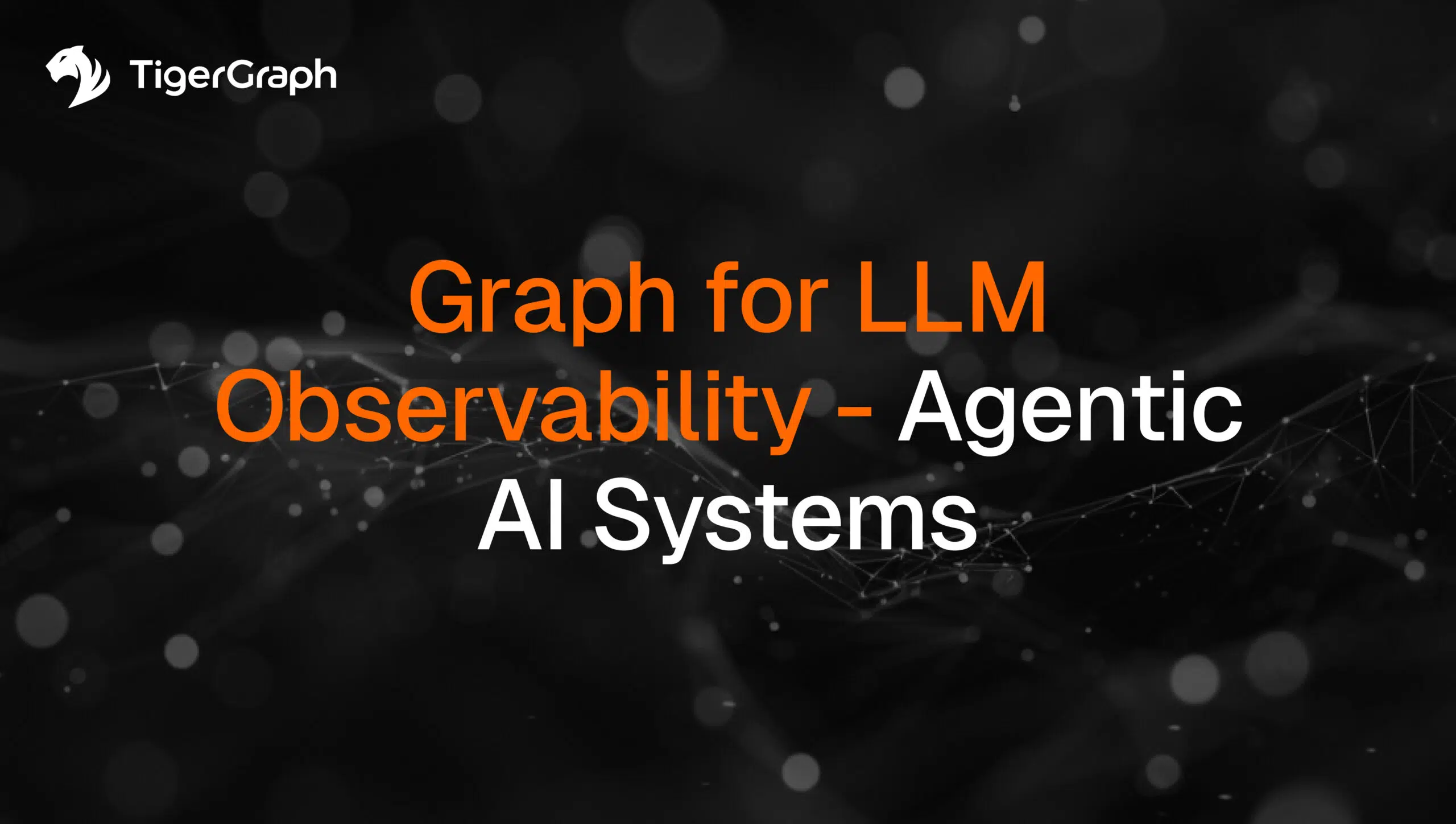Graph for LLM Observability is The Missing Layer in Agentic AI Systems
Today’s large language models (LLMs) aren’t just responding to prompts; they’re taking action. As these models evolve into autonomous agents capable of making decisions, adapting to new information, and chaining complex tasks together, the stakes get higher.
This new generation of agentic AI systems generates text, but it also interacts with users, retrieves data, calls APIs, and even reasons across workflows. And with that power comes a pressing question for every enterprise deploying them: How do we keep these systems accountable?
Traditional metrics aren’t enough. You can’t rely on surface-level outputs when an AI agent is making critical decisions on your behalf. What you need is insight into the why and how behind each action, not just the what.
- What context did the agent have at that moment?
- Which prior prompts or data sources shaped its decision?
- Is its behavior aligned with policy, ethics, or intent?
In other words: How do I understand what my agents are doing? How do I make their behavior traceable, explainable, and safe?
That’s where graph comes in.
Graph technology gives enterprises the structure they need to track, model, and make sense of LLM-driven behavior. It provides the memory, context, and relational insight that agentic AI requires to be both powerful and accountable.
The Rise of Agentic AI
Traditional LLM use cases, including summarization, translation, and classification, are giving way to agentic workflows where AI agents dynamically retrieve information, make decisions, and interact with external systems. These agents increasingly power:
- Fintech bots navigating multi-step risk assessments
- Healthcare assistants triaging symptoms and surfacing treatment options
- Genetic AI models reasoning across patient data and research findings
But autonomy introduces complexity.
The same LLM that fetches a document today might revise a strategy tomorrow. And when the agent takes a wrong turn and outputs biased results, leaks sensitive data, or contradicts a prior decision, businesses need to understand what happened, and why?
The LLM Observability Gap
Traditional observability tools fall short. Logs may show that a prompt was issued and a response returned, but they don’t explain:
- The context state at time of execution
- Which prior steps or memory the agent drew from
- What entity relationships, intent layers, or role assumptions shaped the outcome
This is the “black box” problem in a new form: not just why the model said what it did, but how it reasoned across time, interaction, and role.
Without a deeper structure, enterprises are left with surface-level snapshots that are disconnected, decontextualized, and difficult to audit.
Graph as the Solution
When it comes to making sense of LLM-driven behavior, few technologies are better suited than graph. By storing relationships between data points, graphs can both hold the knowledge and ground rules to provide better standard LLM responses, but also record the step-by-step progress to provide observable steering for agentic AI.
Graphs let you represent and query the relationships between people, data, actions, intentions, and outcomes. Instead of asking, “What did the AI say?” you can ask, “What did it know, why did it say it, and how did it get there?”
But not all graph systems are created equal.
This is where TigerGraph comes in. Built for performance at scale, TigerGraph delivers a combination of context persistence, behavioral traceability, and dynamic relationship modeling that goes beyond what most graph solutions offer.
- Context persistence means you don’t lose the thread between sessions, agents, or workflows. The memory sticks.
- Behavioral traceability means you can track how inputs cascade through the system, triggering decisions or shifts in intent.
- Dynamic relationship modeling means the graph adapts as new people, roles, or signals enter the picture, keeping your AI grounded in reality, not just static rules.
You don’t just want to know what the LLM said. You want to understand the full stack of context, timing, intent, and interaction. That’s what graph reveals.
How TigerGraph Powers Observability in Practice
TigerGraph was purpose-built to handle the real-time, high-complexity needs of modern enterprises. Its native parallel traversal engine and schema-first approach allow it to operate at the speed and scale that agentic AI demands.
Here’s how that plays out in practice:
- Prompt execution graphs connect every prompt to its prior context, data sources, and reasoning steps, so you can reconstruct the full decision path.
- Context chaining and memory graphs preserve what each agent knew, when they knew it, and how that influenced downstream choices.
- Risk-aware decision graphs highlight behavior patterns, like repeated overconfidence or hallucination risk, before they become problems.
This level of observability transforms AI from a black box to a transparent, auditable system. You’re not just reacting to what the model spits out, you’re understanding why it behaved that way in the first place.
Graph as Guardrail: Building Safer Agentic AI
Observability is only part of the story. Graphs also enable agentic AI to behave more responsibly from the start.
By encoding policies, norms, and relational awareness into the graph itself, you’re giving AI systems a set of embedded guardrails rather than just after-the-fact fixes.
Here’s what that looks like in action:
- A financial assistant avoids offering high-risk products to customers with low trust scores, because the graph reveals that context.
- A healthcare agent cross-references treatment suggestions with validated sources, because the graph filters out unsupported or outdated info.
- A customer service bot escalates cases with care because the graph knows the user’s history, tone, and past preferences.
This is proactive intelligence—the kind that helps AI systems act with awareness, alignment, and nuance.
Don’t Just Prompt — Observe
The move toward autonomous AI is already happening. But autonomy without oversight is a risk few enterprises can afford.
Agentic AI needs observability. That means knowing not just what your models are saying, but how they got there, and where they might go next. It means building systems that can adapt, explain, and operate within guardrails you can trust.
Because prompting without observability is like flying blind, and graph gives agents memory, context, and accountability. So, if you’re building agentic systems, don’t rely on guesswork or static logs. Start with the graph and give your AI the structure it needs to stay intelligent and aligned.
Ready to future-proof your organization with agents that do more than guess? Start observing.
Let’s talk about how graph can help you stay ahead of inevitable shifts.
Every enterprise needs to track, model, and make sense of system behavior. Graph fills that gap, bringing memory, context, and relational insight into every decision. It’s time to experience agentic AI systems acting with awareness rather than focusing solely on output.
Try TigerGraph Savanna for free at tgcloud.io.

